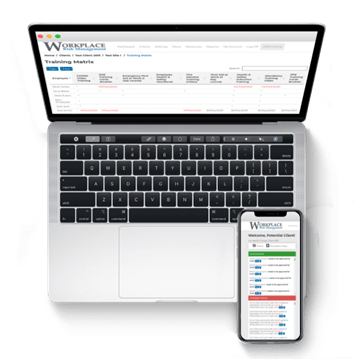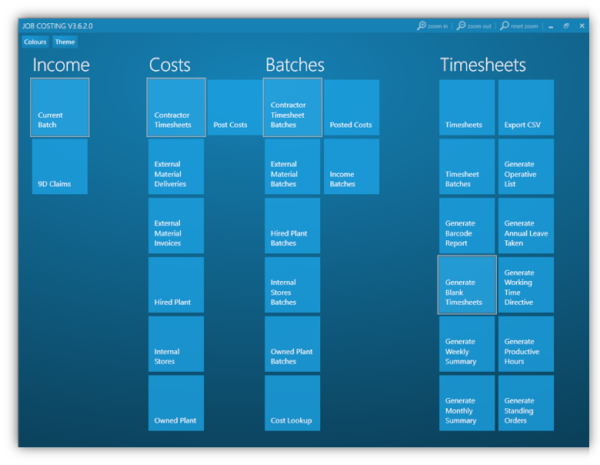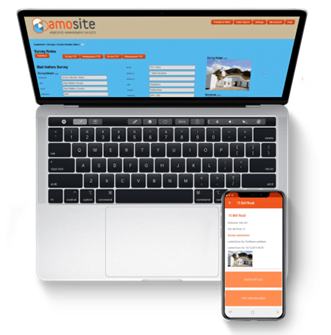Acceptance Criteria Examples – Introduction
What Are Acceptance Criteria?
Acceptance criteria are simple rules or conditions that ensure a task or part of a project is completed correctly. They clearly describe what needs to happen for everyone to agree that the job is finished and works properly. When you’re having custom software built, acceptance criteria act as a checklist to confirm that the software meets your needs and works as expected. Acceptance criteria examples can include things like ensuring a feature is accessible, functions properly, or meets certain performance standards.
Why Do Acceptance Criteria Matter?
Acceptance criteria are important because they make sure everyone is on the same page. When working on a software project, you, your team, and the developers need to be clear about what the software should do. Without this clarity, you might end up with something that doesn’t work the way you expected.
Imagine your child asks you to buy them a ball. Without any details, you might end up buying a ball of any size, colour, or type. However, if your child specifies that they want a standard-sized white tennis ball, you’ll know exactly what to get.
In the same way, acceptance criteria give developers clear and precise instructions about what you want from your software. This removes any confusion or misunderstanding, ensuring the final product matches your expectations perfectly.
What Makes Good Acceptance Criteria?
Good acceptance criteria are simple, clear, and focused on results. They should be easy to read and understand, even if you’re not a technical expert. They also need to be testable. This means there should be a way to check if the software meets the criteria.
For instance, if you’re having an online shopping cart built, an acceptance criterion might be: “When the customer changes the quantity of an item, the total price updates automatically.” This is clear and testable. You can easily check if it works by trying it out.
Another important point is that good acceptance criteria focus on the “what,” not the “how.” You don’t need to worry about how the developers will make it work; instead, you explain what the software should achieve.
How Do Acceptance Criteria Help You as a Business Owner?
As a business owner, you don’t need to understand all the technical details of building software. What you care about is getting a tool that works the way you need it to. Acceptance criteria help by giving you confidence that the final product will meet your needs.
They also save time and avoid misunderstandings. Without clear criteria, developers might spend time building something that doesn’t match your expectations. Clear criteria mean fewer mistakes, less back-and-forth, and a smoother project overall.
Writing Acceptance Criteria
Writing acceptance criteria is mainly the responsibility of your developers or software consultants. They will take your requirements and turn them into clear, testable conditions. However, it’s still useful for you to have a basic understanding of what this involves, especially if you need to be very specific about a requirement.
For example, instead of saying, “I want it to work quickly,” you could specify, “The page should load within three seconds.” You don’t need to worry about the technical details, but being clear about what you want, helps developers create accurate acceptance criteria.
Your developers will ensure the criteria are precise, and they’ll guide you through the process if needed. With solid acceptance criteria in place, everyone will have a clear understanding of what success looks like. This will help your project run smoothly and make sure the software meets your needs.
To give you a better idea of what acceptance criteria looks like, we’ve included some acceptance criteria examples near the end of this blog post.
Why Acceptance Criteria Matters in Custom Software Development
Acceptance criteria are an essential part of custom software development because they help ensure that the project stays on track and meets your needs. By setting clear conditions for what the software should do, they provide numerous benefits that improve the development process and the final result.
Another key benefit is that acceptance criteria can reduce the amount of rework that might be needed during the development process. Without clear criteria, developers might build something that doesn’t fully meet your needs, and they may have to go back and make changes. With well-defined acceptance criteria from the start, you can agree with your developers your precise requirements, which helps them get things right the first time. This saves both time and money and avoids delays in the project.
Why Acceptance Criteria Matter in Custom Software Development
Some of the key benefits of acceptance criteria, such as improving communication, ensuring clarity, and aiding in testing, have already been covered. However, there are additional reasons why acceptance criteria are crucial for the success of your custom software development project.
Preventing Scope Creep
Scope creep happens when the project gradually expands beyond the original goals. This can often occur when requirements are not clear or are constantly changing. With well-defined acceptance criteria, you and your development team can keep the project on track. Clear criteria ensure that everyone is aligned from the start and prevents unnecessary additions that could delay the project or increase costs. By sticking to the original requirements, you help ensure that the software meets your needs without veering off course.
Staying Aligned with Business Goals

Acceptance criteria also play a key role in ensuring your custom software aligns with your business goals. As a business owner, your primary concern is getting software that helps achieve your objectives.
When you set clear acceptance criteria, you make sure the development team understands your needs, and the final product reflects your business priorities. This alignment keeps the project focused, ensuring that the software doesn’t just work well but also serves the purpose it was built for, all while staying within your desired timeframe and budget.
Reducing Time and Costs
One of the major benefits of having solid acceptance criteria is the time and money saved. When you provide clear criteria from the start, developers know exactly what to build. This reduces the chances of unnecessary revisions or rework later in the project. With fewer surprises along the way, the project moves forward more smoothly, and you avoid costly delays. Additionally, by making sure the software meets your requirements from the outset, you reduce the need for last-minute changes that can drive up costs.
Why Choose BSPOKE Software for Your Project?
When choosing a company to help develop your custom software, experience and expertise matter. At BSPOKE Software, we have over 15 years of experience in creating custom software solutions, including desktop, mobile, and web applications. This means we’ve worked with many different businesses and industries, gaining the knowledge needed to create solutions that work well for you and your team. Whether you’re looking for software for your office, on-the-go apps, or solutions that can be accessed through a website, we can build it.
Our Focus
Our focus is on creating software that boosts productivity and efficiency for your business. We understand that running a company is busy, and your time is valuable. That’s why we tailor our software to meet your specific needs, helping you save time and get more done. We take the time to learn about your business and create software that fits into your current processes, rather than making you change everything to fit the software. This way, you can improve how your team works without disrupting your day-to-day activities.
Our Approach
One of the things that sets us apart is our collaborative approach. We work closely with you throughout the entire project, ensuring that your goals and acceptance criteria are clear and fully aligned with the software we’re developing. We want to make sure that we are building exactly what you need and that the software is meeting your expectations at every step of the process. Our team listens carefully to your feedback, adjusts where necessary, and always works in your best interest to ensure the final product is a perfect fit for your business.
If you’re ready to take your business to the next level with custom software or a digital transformation, get in touch with BSPOKE Software today. We offer a free consultation to discuss your needs and help you discover how we can turn your ideas into reality. Let us show you how our tailored solutions can improve your business operations and help you achieve your goals.
How we Write Effective Acceptance Criteria
At BSPOKE Software, we follow best practices to make sure your software does exactly what you need it to. We focus on the results you want, not the technical details. This means the acceptance criteria will clearly state what the software should do, not how it will do it. For instance, instead of getting into technical terms, we’ll simply say, “The user should be able to search for products and see results within 2 seconds,” rather than talking about the underlying search algorithms. This approach keeps things clear and easy to understand, ensuring your needs are met.
We also use simple, plain language so everyone can easily understand the criteria, whether they have technical expertise or not. Collaboration is key, so we work closely with you and your team to ensure everyone’s needs are covered. This ensures the criteria reflect the goals of all stakeholders.
To keep things clear and easy to test, we use formats like Given/When/Then or simple checklists. This structure helps ensure the software is tested and validated correctly, with everyone clear on what to expect.
By using these best practices, we ensure that your acceptance criteria are clear, achievable, and measurable, helping us deliver the software you need.
Example 1: Uploading Files – Smart Home Charge

Smart Home Charge (SHC) installs electric vehicle chargers at both business and residential properties. To make sure they receive the proper documentation from customers when they apply for an installation, SHC needed a simple way for files to be uploaded to their software system.
User Story:
As a customer, I want to upload images and documents related to my EV charger installation, so I can complete my application.
Acceptance Criteria (Given/When/Then):
- Given that the user is on the upload page,
- When the user selects an image or document to upload,
- Then the system should accept files in JPG, PNG, or PDF formats.
Verification Checklist:
- Users must be able to upload image files in JPG, PNG, or GIF formats.
- The file size must not exceed 5 MB.
- The system should not allow users to save files that do not meet the above criteria and warn users when conditions are not met.
This ensures Smart Home Charge receives all the required documents in the correct formats while keeping the upload process smooth and user-friendly for their customers. Read Smart Home Charge’s digital forms, case study.
Example 2: Multi-Language Support – WRM

Workplace Risk Management (WRM) works in the health and safety industry, helping their clients stay compliant with important regulations. Since some of their clients are based internationally, WRM needs to offer multi-language support on their website.
User Story:
As a user, I want to switch the website’s language so I can use it in my preferred language.
Acceptance Criteria (Given/When/Then):
- Given that the website supports multiple languages,
- When the user selects a language from the language selector,
- Then all text on the website should be updated to the chosen language.
Verification Checklist:
- The website must have a visible language selection option.
- The chosen language should remain selected when the user returns to the website.
- If the selected language file fails to load, an error message should appear.
This ensures that WRM can serve their international clients effectively, making their website accessible to users in different languages. You can find out more about the software we developed for WRM on this page.
Example 3: Data Export Functionality – Highways

The Highways Department at Leicester City Council manages road standards and often needs to download various reports in Excel format for offline analysis.
User Story:
As an admin, I want to export data in Excel format so I can analyse it offline and make reports more easily for roadwork costing in a given period.
Acceptance Criteria (Given/When/Then):
- Given the admin selects the “Export Data” option in the system,
- When the action is confirmed,
- Then an Excel file (.xlsx) should download, containing all the necessary data fields related to the roadwork jobs in the selected time period.
Verification Checklist:
- The export file should include relevant details such as job ID, cost estimates, job start and end dates, worker hours, and materials used.
- The exported data should be accurate, reflecting the latest system data for the selected time period.
- The export process should take no longer than 30 seconds, even with large data sets (for example, 10,000 records).
- The Excel file must be properly formatted, with clear column headers and no missing data.
This ensures that the Highways Department can efficiently manage, analyse, and report on roadwork costs, enabling better decision-making and smoother project management. Find out how we took the Highway’s original legacy Access system and built a modern software solution.
Example 4: Secure Web Portal Login – Amosite

Amosite, an asbestos management company, ensures that their clients can access their personal records safely. To keep their system secure, they require a strong login process for users to access their accounts.
User Story:
As a user, I want to securely log in to my account so I can view my records without worry.
Acceptance Criteria (Given/When/Then):
- Given that a user enters their username and password,
- When the user submits the login details,
- Then the system should verify the username and password combination and grant access if they are correct.
Verification Checklist:
- The login page should display an error message for incorrect login details.
- Users should be redirected to the homepage upon successful login.
This ensures that Amosite’s system remains protected and that only authorised users can access sensitive data. You can find out more about Amosite’s web portal on this page.
Conclusion: Acceptance Criteria as a Roadmap to Success
Acceptance criteria are essential for ensuring high-quality software that meets your business needs. They help align your team, prevent misunderstandings, and ensure the final product meets user expectations. By clearly defining what success looks like, acceptance criteria keep the project focused, reducing the risk of costly changes later.
Another cost-effective approach to custom software development is to start with a core system. This allows your team to focus on the most important features first, ensuring that the foundation of your software is solid. From there, you can build on the core system by adding custom features and enhancements as needed, always guided by clear acceptance criteria. This phased approach ensures that you get exactly what you need, when you need it, without unnecessary delays or expenses. By following this method, you not only reduce the risk of costly changes but also maximise the value of your investment from the very start.
Ready to bring your custom software vision to life? Contact BSPOKE Software today for expert guidance and tailored solutions that will help you achieve your business goals efficiently and effectively. Let’s create something exceptional together.

